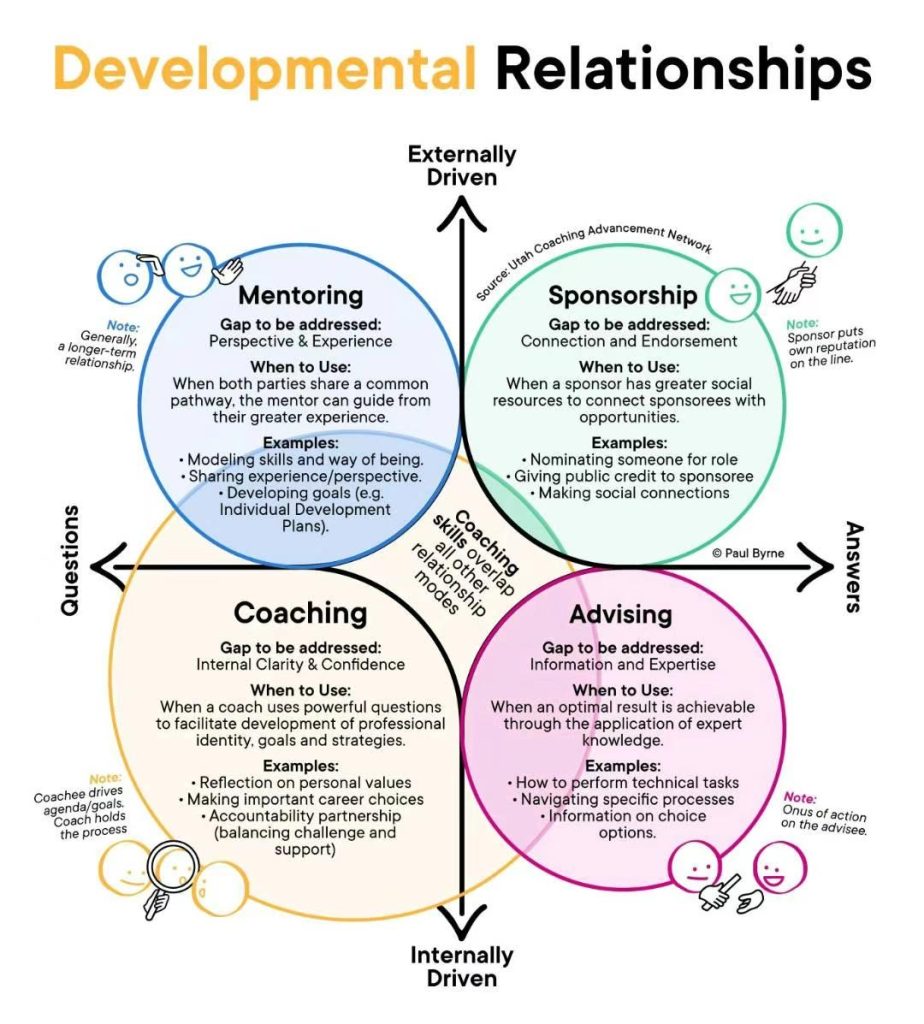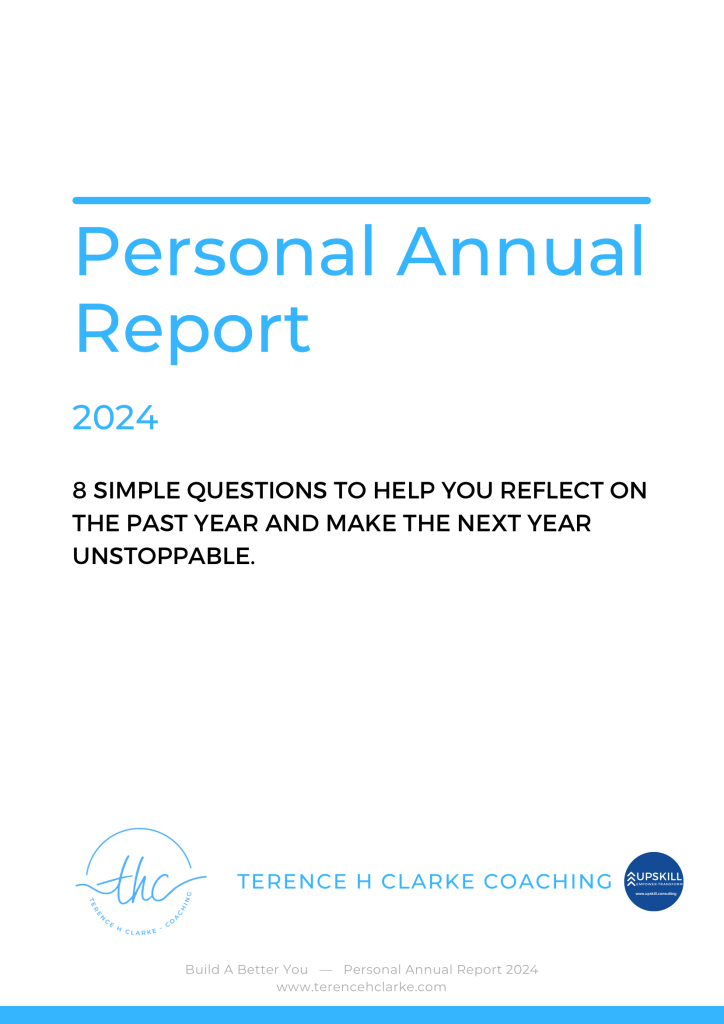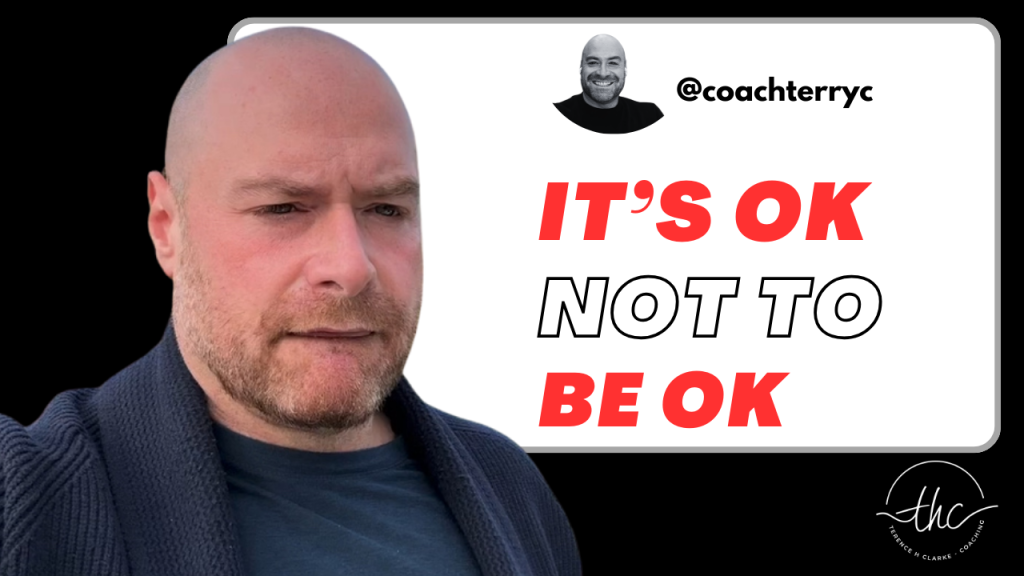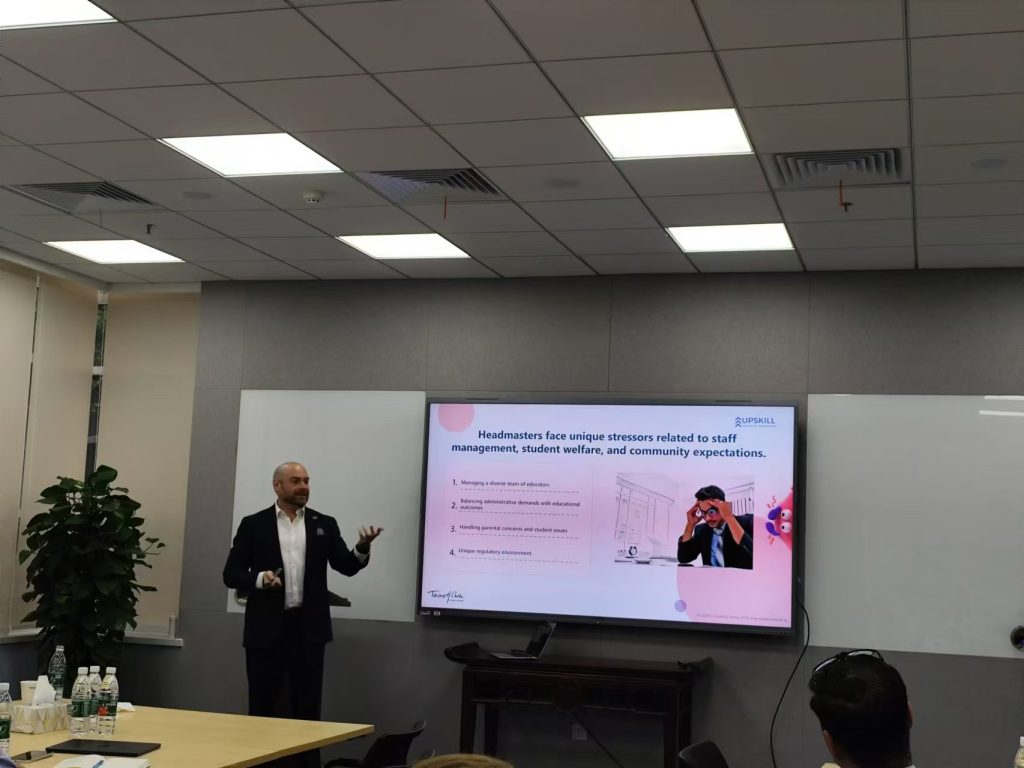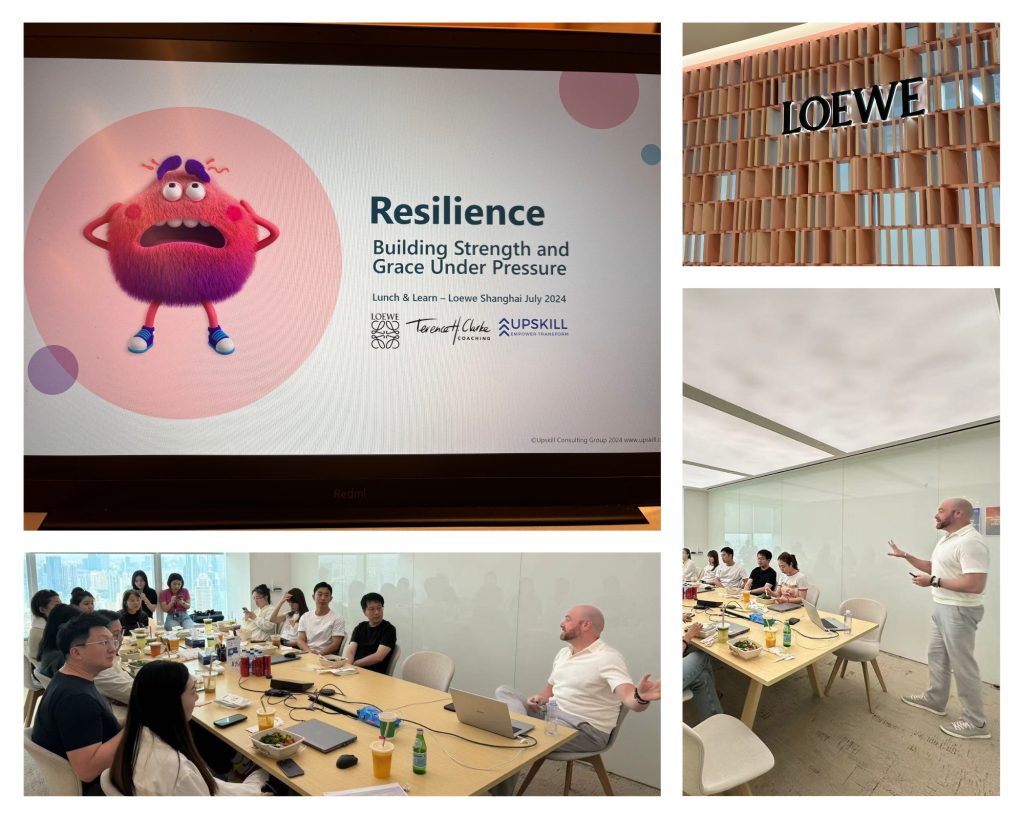Understanding Developmental Relationships: A Simple Guide
In life, we all need guidance at different stages, whether it’s for work, personal growth, or decision-making. Have you ever thought about the types of relationships that help us grow? There are four main types of developmental relationships that each play a unique role: Mentoring, Sponsorship, Coaching, and Advising. Let’s explore what each of these relationships means, how they help, and when you can use them. 1. Mentoring: Learning from Experience Mentoring is when someone with more experience helps guide you. Imagine you have a big brother or sister who has gone through what you’re experiencing now. They help you because they’ve been in your shoes before. Mentoring is often a longer relationship, where the mentor helps you think about your future and the steps to get there. It’s like having a wise guide by your side. 2. Sponsorship: Creating Connections Sponsorship is different from mentoring because the sponsor does more than offer advice. They use their social network to open doors for you. A sponsor is like someone who introduces you to important people, vouches for you, or helps you get into new opportunities. Sponsors are people who put their own reputation on the line for you. This can be a great way to advance in your career or achieve personal goals, as they make sure you get noticed. 3. Coaching: Gaining Clarity and Confidence Coaching is all about asking the right questions to help you find your own answers. A coach doesn’t tell you what to do but helps you think through problems and make decisions for yourself. In coaching, the coach leads the process by asking powerful questions, but you, as the coachee, decide the direction and take charge of your goals. This type of relationship helps build self-confidence and clarity. 4. Advising: Getting Expert Help Advising is when someone with more knowledge gives you information to help solve a problem. An advisor is like a teacher or expert in a certain area, giving you direct advice on what to do. Unlike coaching, where you find the answers yourself, an advisor gives you the answers. They tell you what steps to take and provide useful information that you need to move forward. How Do These Relationships Work Together? All four of these relationships—mentoring, sponsorship, coaching, and advising—can be useful at different times. Sometimes, you might need advice from a mentor. Other times, a sponsor could help you get a promotion, or a coach might help you think through your next big decision. Each of these relationships brings something different to the table: Whether you’re trying to make a big life decision, advance in your career, or learn a new skill, these four types of developmental relationships can support your journey. Understanding when and how to use them will help you get the most out of each relationship. The key is knowing that everyone needs support, and with the right kind of help, you can achieve great things! By learning how to use mentoring, sponsorship, coaching, and advising, you’ll have the tools to grow in every area of your life. Which one do you need right now? Notice: JavaScript is required for this content.
Understanding Developmental Relationships: A Simple Guide Read More »

